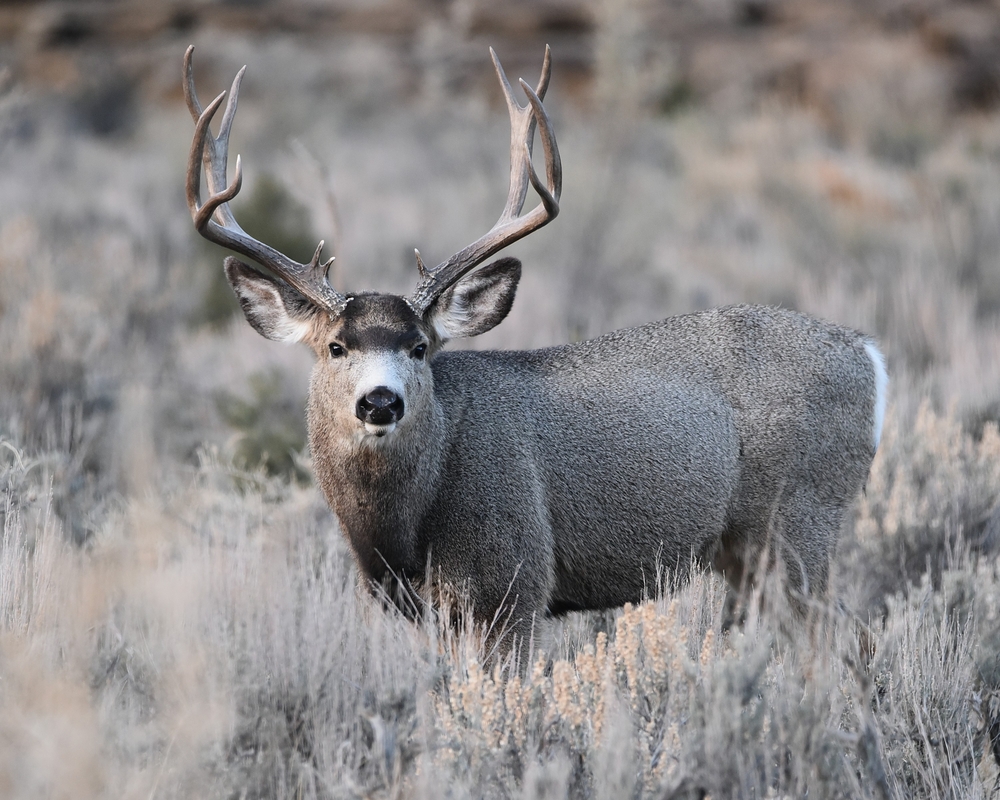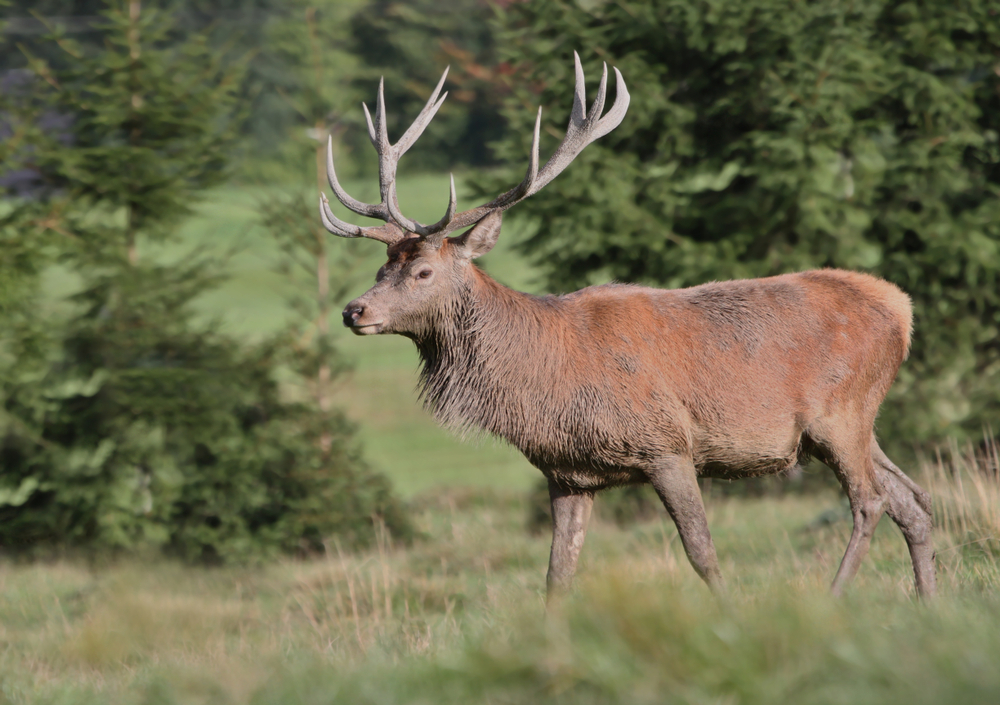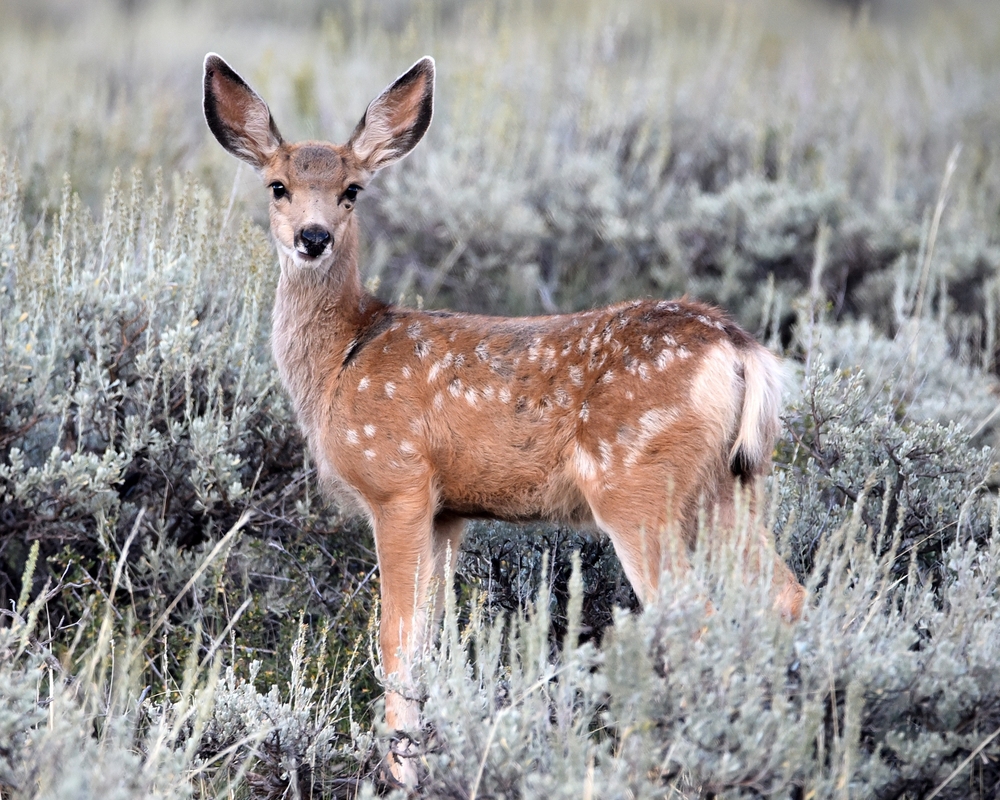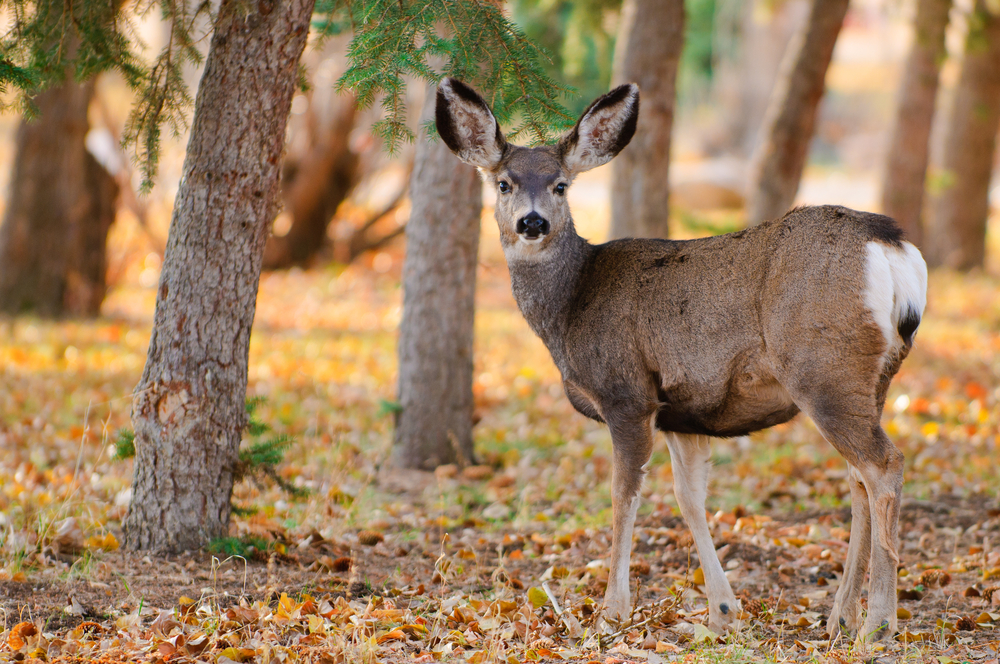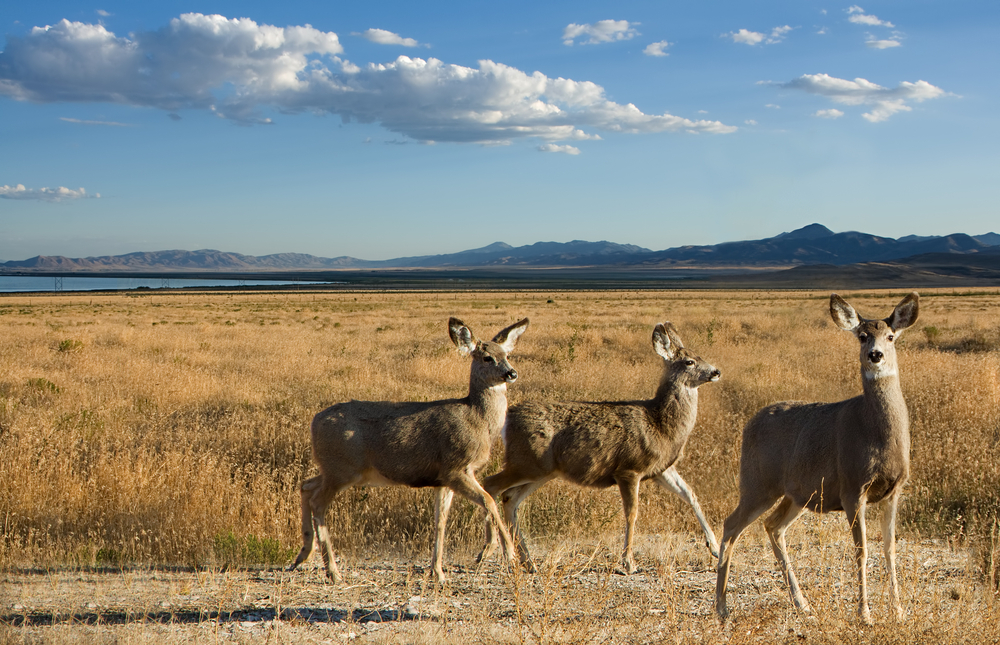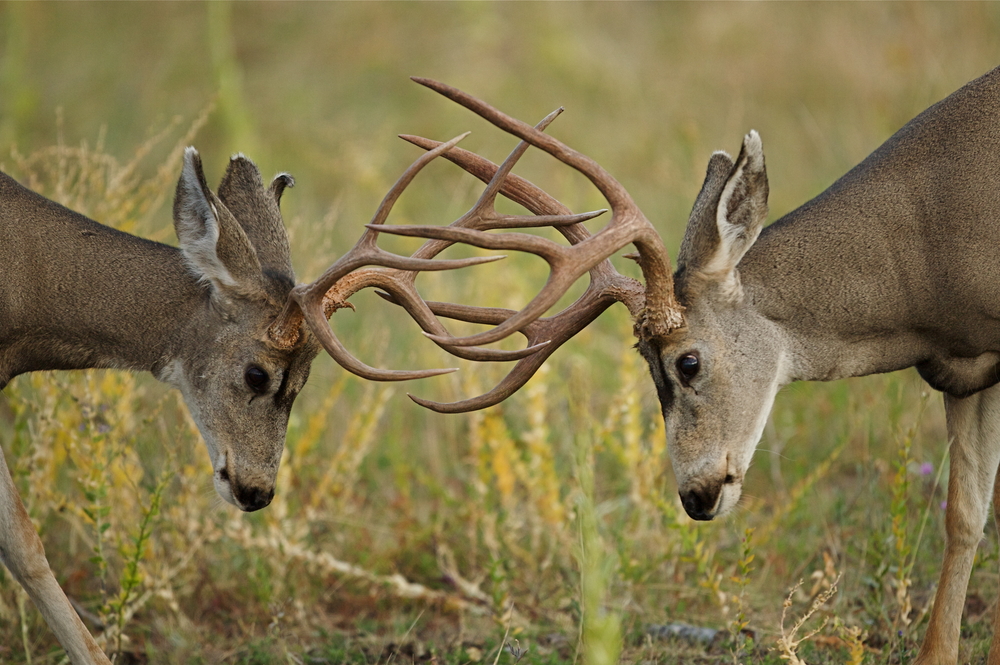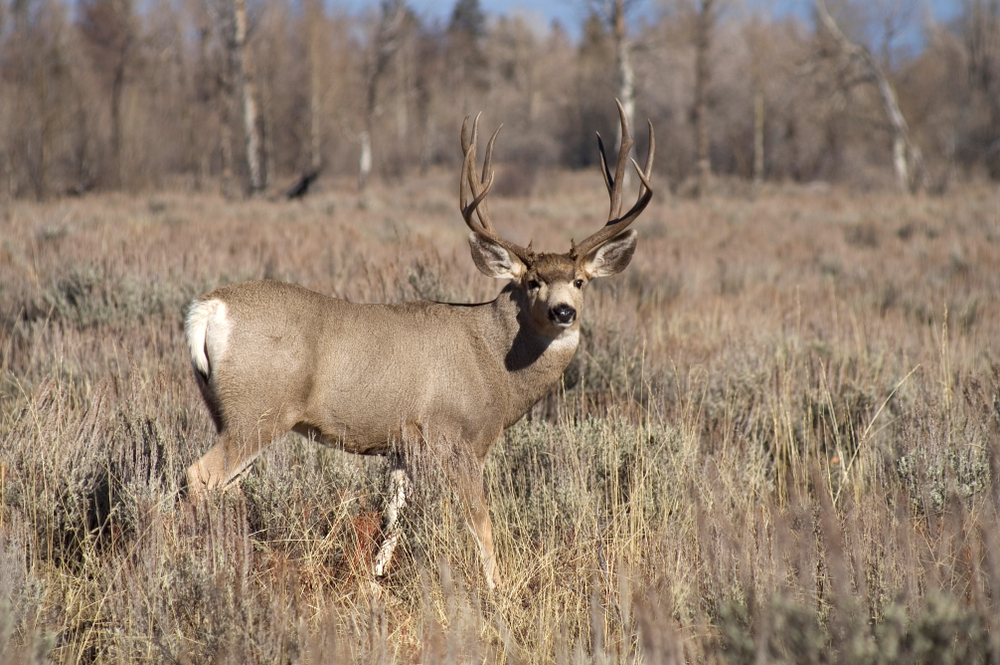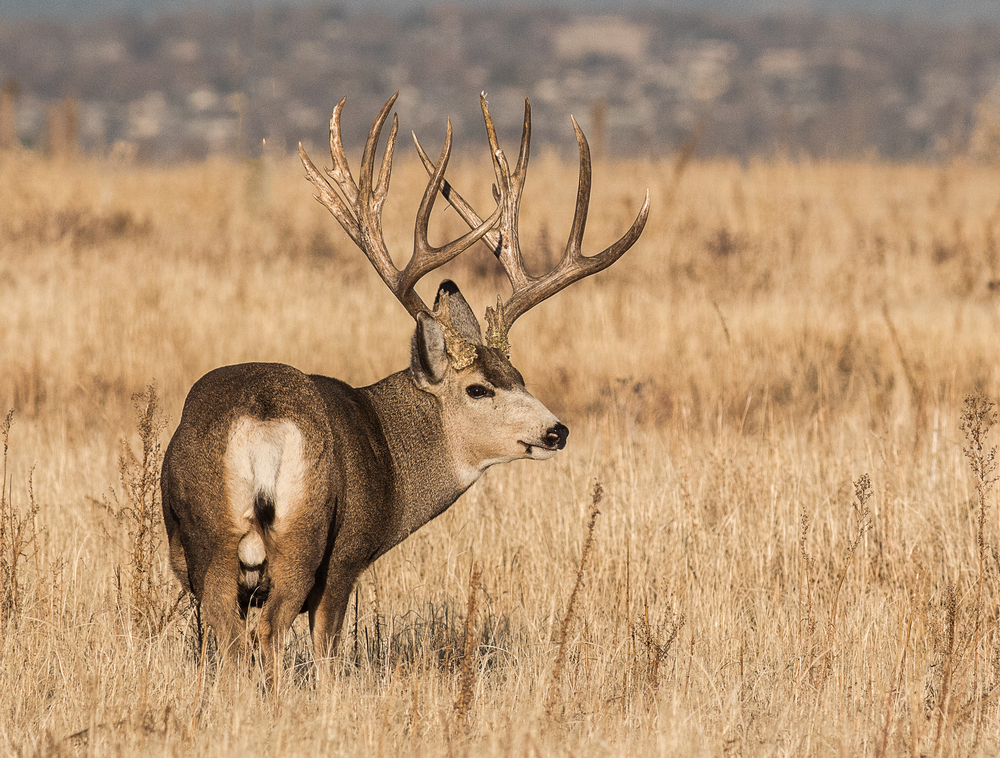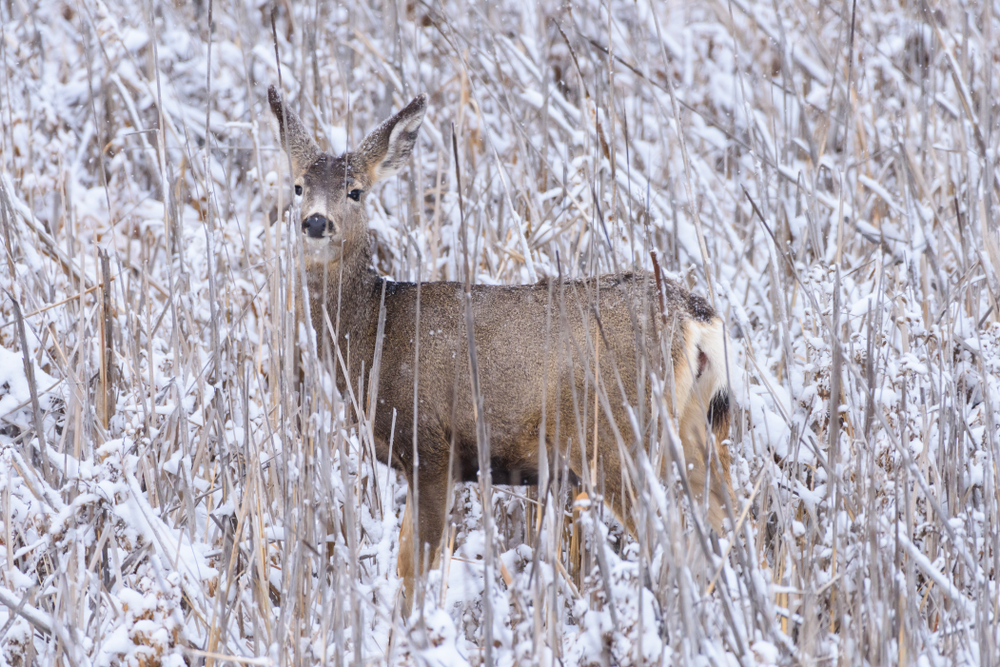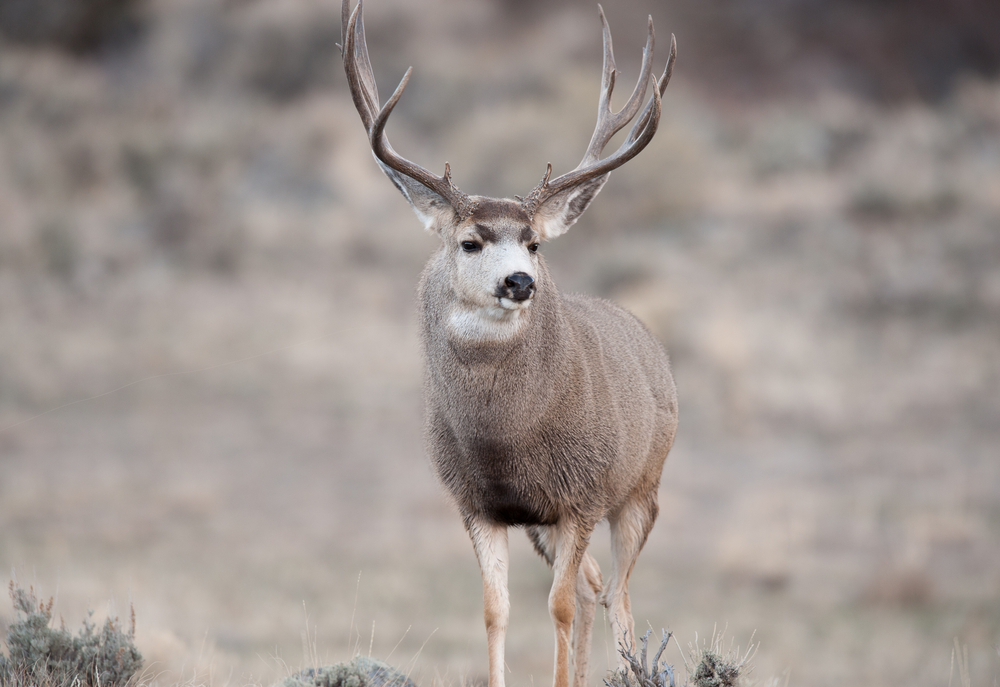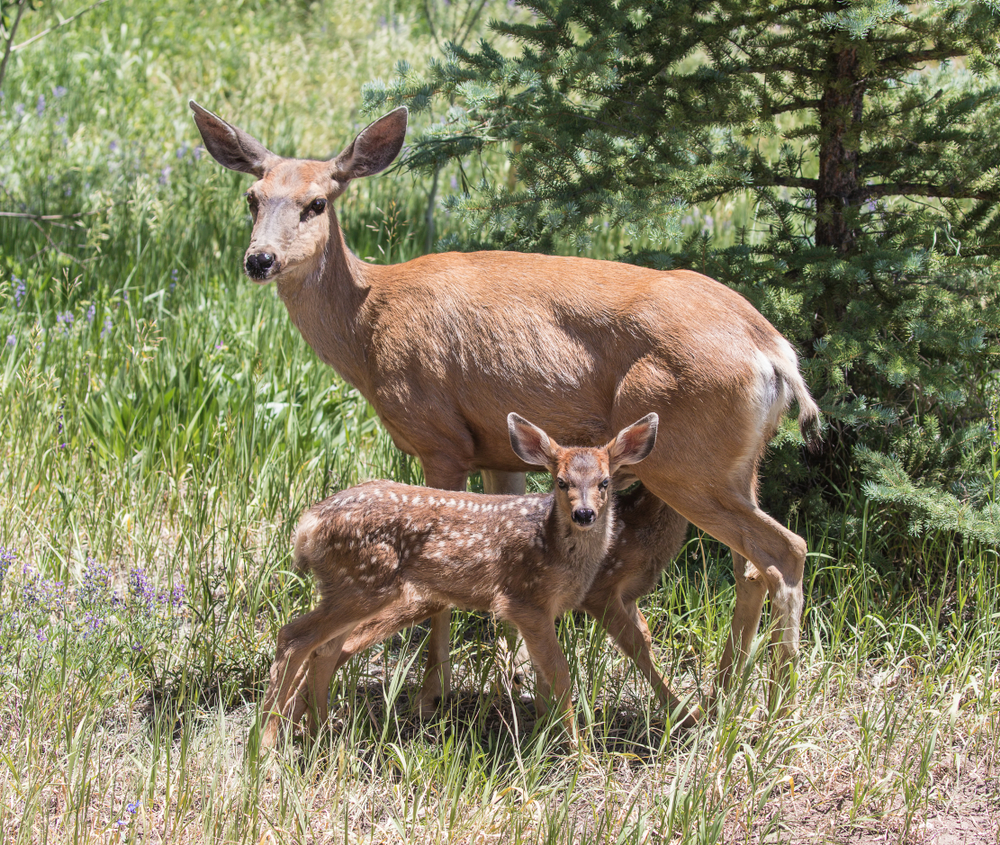Mule deer, a unique species within the deer family, have several distinguishing characteristics that set them apart from other deer:
- Ears: Mule deer are named for their large, mule-like ears, which are much larger and more noticeable than those of most other deer species.
- Antler Structure: The antlers of mule deer fork as they grow, rather than branching from a single main stem like the white-tailed deer or elk. This “forked” antler structure is a key distinguishing feature.
- Tail: They have a distinctively black-tipped tail, which is different from the completely white tail of the white-tailed deer.
- Size and Build: Mule deer are generally stockier and have a slightly larger body size compared to white-tailed deer, with a different body proportion.
- Gait: They are known for their unique bounding gait, called “stotting,” where all four feet come down together. This mode of movement allows them to move quickly over rough terrain.
- Habitat: Mule deer are primarily found in the western parts of North America. They inhabit a range of environments including arid deserts, shrublands, forests, and mountainous areas, which is different from the predominantly forested habitats preferred by many other deer species.
- Behavior: Mule deer have different social structures and behaviors compared to other deer. For instance, they are less likely to form large herds and have different migration patterns.
- Coloration: Their coat tends to be a grayish-brown in color, which differs from the reddish-brown coat of the white-tailed deer.
These characteristics not only distinguish mule deer from other deer species but also signify their adaptation to the diverse and often rugged landscapes of the American West.



































































